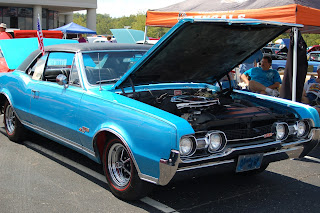Back in the halcyon days of the late 1960s, many of Detroit's top lines were working with other notable companies to turn out factory racing machines. Chevy had teamed up with custom car shop Yenko and Ford with Carroll Shelby to turn out some of the hottest street legal cars ever to roll off assembly lines.
Feeling that they didn't want to be left behind in the race to flex their muscle, Oldsmobile created a machine of their own and teamed up with a performance company of their own to churn out a machine that was sure to provide anyone with the guts to drive it a massive adrenaline rush.
In the mid 1960s all of Detroit was trying to make cars with muscle. The various divisions of General Motors were not different. In 1964 Pontiac had a surprise success with their Tempest GTO. Immediately Pontiac and Oldsmobile were ordered to work together to make a powerful, yet stylish entry into the muscle market. The Pontiac version didn't pan out but the one from Olds, featuring a four barrel carb, a four speed transmission and dual exhausts, did. Because of those features it was dubbed the 442.
Initially a high performance trim for the Cutlass or F85 lines, the 442 was both a sales and a performance success. In 1965 the trim sold over 25,000 models and was tested as hitting zero to 60 in 5.5 seconds. This was a real muscle machine.
Minor tweaks occurred over the next couple of years and by 1968 Oldsmobile made the 442 it's own model, freeing it up to complete head on with the cars from Ford and Chevy. Over 30,000 were sold that year and happy owners were turning the quarter mile in slightly over 15 seconds.
1968 marked the first year that Oldsmobile teamed up with Hurst Performance, a Pennsylvania based company famous for their aftermarket transmissions, to create what they hoped was a partnership to compete with the Yenko Camaro and the Shelby Mustang.
For a few years the 442, as well as all muscle cars, roared along with ease but by 1972 manufacturers saw the beginning of the end. Insurance rates had begun to shoot through the roof and people were somewhat reluctant to pay those extortionate rates. Also, the price of gas had taken a sudden upswing and, let's face it, none of these cars were designed and built with fuel efficiency in mind. Toss in the impending government fuel and emission regulations and the muscle car era was about to come to an end.
Oldsmobile kept the 442 name alive through the 1980s and into early 1992. Sometimes it jumped back to being simply a trim but idea behind the car, the performance that it had shown, ensured that sufficient buyers would drive one off the dealer lots. Still, the actual performance had been severely inhibited and the 442 of the 1980s were a mere shell of the 1968 Hurst model shown here.
Friday, May 10, 2013
You are Here » Home »
» Factory Racer
Subscribe to:
Post Comments (Atom)






0 comments:
Post a Comment